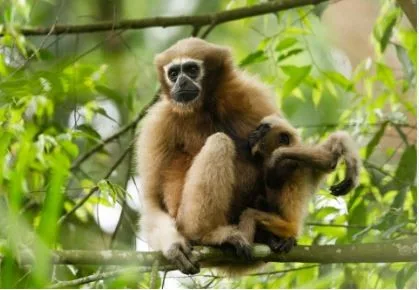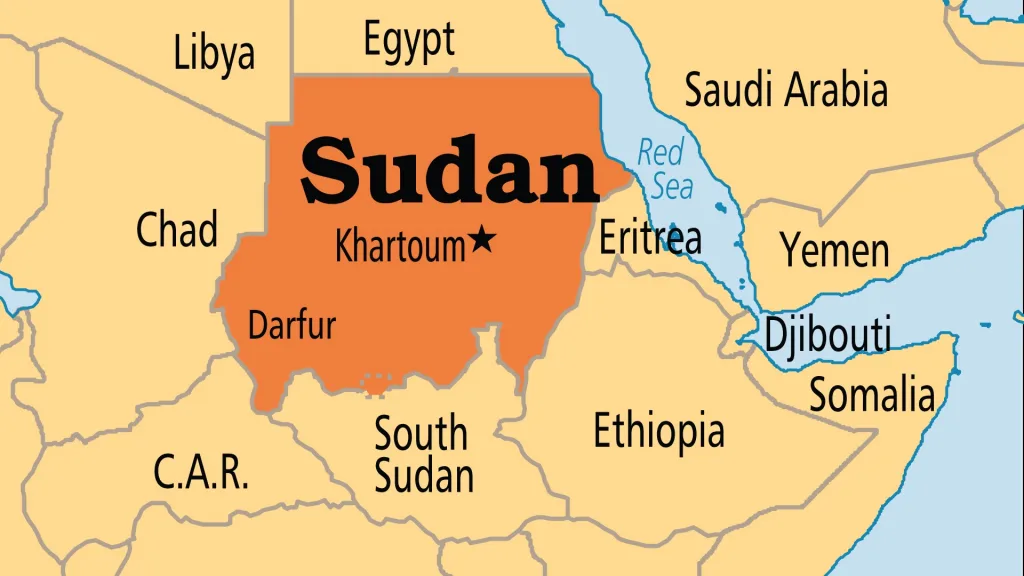Ban of Fixed-dose Combination (FDC) Drugs
Syllabus: GS2/ Health
In News
- The government has banned 156 fixed-dose combination (FDC) drugs, including popular medicines such as Cheston Cold and Foracet, used for cold and fever and pain respectively.
About
- A total of 499 FDCs have been banned since 2014. The problem of irrational FDCs was first highlighted in 2012.
- A committee set up in 2014 found 963 such drugs to be irrational and suggested their ban. The government’s recent action is part of an ongoing effort to eliminate these from the market
- The 2019 rules require FDCs to be treated as new drugs, needing central approval, which has reduced the number of irrational combinations in the market.
- The Indian Pharmaceutical Alliance (IPA) supports the ban, citing previous committee reviews and emphasizing patient safety
What are Fixed-dose Combination (FDC) Drugs?
- They are medications containing more than one active ingredient in a single dosage form, often used to treat conditions requiring multiple drugs, such as tuberculosis and diabetes, to improve adherence to treatment.
- The ban includes combinations for gastrointestinal issues, anti-allergic medications, skin treatments, migraine and nausea, menstrual cramps, and erectile dysfunction.
Reason for the Ban
- No Therapeutic Benefits: These FDCs were termed “irrational” by the government, meaning they offer no therapeutic benefit or contain ingredients that don’t work well together or aren’t necessary for patients to take together.
- Patients might end up consuming unnecessary drugs. For example, Cheston Cold combines paracetamol, cetirizine, and phenylephrine, which may not all be needed for every patient.
- Impact on the Market: Manufacturers have been ordered to stop producing, stocking, and selling these drugs immediately, though they may still be available for some time due to potential legal challenges
- Health Impact: Consuming these banned FDCs now is unlikely to cause harm, but their continued use poses risks like antibiotic resistance and unnecessary medication.
- Despite earlier bans, FDCs have increased in proportion, particularly antibiotic FDCs, with many being potentially inappropriate and not recommended by WHO.
Source : IE
IMDX Mpox Detection RT-PCR Assay
Syllabus: GS2/ Health
Context
- The Central Drugs Standard Control Organisation has granted approval to Siemens Healthineers for the manufacture of RT-PCR testing kits for detection of Mpox.
About
- The World Health Organization has classified the outbreak of Mpox as a global health emergency.
- A new strain of the disease has spread beyond the Democratic Republic of Congo for the first time to at least 12 other African countries.
What is Mpox?
- Mpox, previously known as monkeypox, is a viral illness caused by the monkeypox virus, a species of the genus Orthopoxvirus.
- There are two distinct clades of the virus: clade I (with subclades Ia and Ib) and clade II (with subclades IIa and IIb).
- Common symptoms: Skin rash or mucosal lesions which can last 2–4 weeks accompanied by fever, headache, muscle aches, and swollen lymph nodes.
- Transmission: It can be transmitted through close contact with someone who has mpox, with contaminated materials, or with infected animals.
- Treatment: Mpox is treated with supportive care, with close attention to nutrition, hydration, skin care, prevention of secondary infections and treatment of co-infections, including HIV where present.
- Prevention: There are vaccines for Mpox. Vaccination should be considered along with other public health interventions.
Source: TH
HP Increases Minimum Age of Marriage for Women
Syllabus: GS2/Social Justice; Women Issues
Context
- In a significant move towards gender equality and promoting higher education, the Himachal Pradesh State Assembly recently passed the ‘Prohibition of Child Marriage (Himachal Pradesh Amendment) Bill, 2024’.
About
- The Prohibition of Child Marriage Act, 2006 was enacted to prevent the solemnisation of child marriages and address related matters.
- The Bill proposes raising the minimum age of marriage for girls from 18 to 21 years.
- It aims to provide gender equality and create opportunities for girls to pursue higher education and personal development.
- Himachal Pradesh proudly claims the title of being the first state in India to enact legislation increasing the marriage age of girls to 21.
Why is it significant?
- Early marriages can hinder not only a woman’s career but also her physical development.
- By increasing the minimum marriage age, the state aims to empower women and ensure they have more choices and opportunities.
54th Foundation Day of BPR&D
Syllabus: GS3/Internal Security
Context
- Recently, the Union Home Minister attended the 54th Foundation Day celebration of the Bureau of Police Research and Development (BPR&D) in New Delhi.
Bureau of Police Research and Development (BPR&D)
- About:
- It was established formally in 1970 and replaced the Police Research Advisory Council which was formed in 1966. It operates under the Ministry of Home Affairs.
- It envisions transforming Indian police forces into SMART (Strategic, Modern, Agile, Responsive, and Technologically equipped) forces capable of meeting the challenges of policing and internal security effectively.
- Mission and Vision:
- To promote systematic and rapid research on police and prison-related issues in a dynamic and evolving society.
- To apply scientific and technological advancements to enhance policing methods and techniques across the country.
- Key Functions and Divisions:
- Training and Modernization Division: This division formulates quality standards for police training and focuses on capacity building.
- It ensures that law enforcement personnel receive the necessary intellectual, material, and organisational resources to excel in their roles.
- The Gore-Committee (1971) studied the training aspects of police and gave several recommendations.
- The Government created a Training Division (1973) in addition to the two divisions already existing to function under the Bureau.
- It actively engages with training initiatives, including iGOT (Integrated Government Online Training), which provides online training to government employees.
- Special Project Division: It specialises in critical areas such as internet security, human trafficking, gender issues, and problems faced by senior citizens. It also publishes valuable research in policing and administration.
- Research and Correctional Administration Division: Responsible for conducting research in key policing areas, this division contributes to evidence-based policy formulation and correctional practices.
- Training and Modernization Division: This division formulates quality standards for police training and focuses on capacity building.
India will Get the First Quantum Computer Under NQM
Syllabus: GS 3 / Science and Technology
In News
- India’s first quantum computer will be launched under the National Quantum Mission.
About
- The goal of the mission is to establish a quantum computer with a computation of 20-50 qubits in the next three years, 50-100 qubits in the next five years and 50-1000 qubits in the next 10 years.
- It is essential for India to have its own homegrown quantum computer. For instance, China has the highest investment numbers by state into quantum computing surpassing even the US.
- And, India needs its own computing capabilities to fend off attacks on the critical digital infrastructure.
- Quantum technology will impact computing, communication, cryptography, and sensing, with applications across healthcare, finance, and defense
About National Quantum Mission
- It was approved by the Union Cabinet on 19th April 2023.
- Total cost: ₹6003.65 crore from 2023-24 to 2030-31.
- Implementation Strategy:Establish four Thematic Hubs (T-Hubs) in top academic and National R&D institutes focusing on:
- Quantum Computing
- Quantum Communication
- Quantum Sensing & Metrology
- Quantum Materials & Devices
- Promote R&D through basic and applied research in mandated areas.
- Mission Objectives: Develop intermediate-scale quantum computers using various platforms like superconducting and photonic technology.
- Establish satellite-based secure quantum communications between ground stations over 2000 km within India.
- Enable long-distance secure quantum communications with other countries
- Quantum Computing Goals:Short-term: Achieve 20-50 qubits in three years.
- Medium-term: 50-100 qubits in five years.
- Long-term: 50-1000 qubits in ten years.
- Impact: Elevate India’s Technology Development ecosystem to global competitiveness.
- Benefit various sectors including communication, health, financial, and energy.
- Applications in areas such as drug design, space, banking, and security.
- Support national initiatives like Digital India, Make in India, Skill India, Stand-up India, Start-up India, Self-reliant India, and Sustainable Development Goals (SDG).
Source : TH
Satish Kumar: New Chairman of Railway Board
Syllabus: Miscellaneous
Context
- The Appointments Committee of the Cabinet (ACC) approved the appointment of Satish Kumar as the Chairman and CEO of Railway Board.
- The Appointments Committee of the Cabinet (ACC) is a high-level committee headed by the PM responsible for appointing senior officials to key positions in the central government and public sector undertakings.
About Railway Board
- The Railway Board was established in 1905 as a part of the British Indian government’s efforts to better manage the expanding railway network.
- It serves as the apex body responsible for the administration, operation, and policy formulation of Indian Railways.
- The Railway Board is headed by the Chairman and CEO, who is the administrative and operational head of Indian Railways.
Source: TH
Hoolock Gibbons
Syllabus: GS3/Species in News
Context
- Assam wildlife department has recommended to the Centre that forest clearance be granted for oil and gas exploration in the eco-sensitive zone (ESZ) of the Hollongapar Gibbon wildlife sanctuary.
Hollongapar Gibbon wildlife sanctuary
- It is an isolated protected area of evergreen forest located in Jorhat district of Assam. The sanctuary was officially established and renamed in 1997.
- It contains India’s only gibbons – the hoolock gibbons, and Northeastern India’s only nocturnal primate – the Bengal slow loris.
Hoolock Gibbons
- Gibbons are the smallest and fastest of all apes. The hoolock gibbon, unique to India’s northeast, is one of 20 species of gibbons.
- Distribution: It is found in forested areas from eastern India and Bangladesh to Myanmar and southern China.
- Habitat: This species is found in thick evergreen, mixed evergreen, and scrub forest throughout its natural range.
- Appearance: Hoolock gibbons are characterized by longer hair, curved white brow streaks, and faintly triangular-shaped head.

- Diet: These animals are generally frugivorous, but fruits may be mixed with insects, leaves, and other vegetable matter.
- Threats: Habitat loss and hunting for food.
- Conservation Status: Endangered in the IUCN Redlist, while the eastern hoolock is listed as Vulnerable.
- Both the species are listed on Schedule 1 of the Indian (Wildlife) Protection Act 1972.
Source: IE
Sudan
Syllabus: Place in News
Context
- The Arbaat Dam in eastern Sudan has collapsed following heavy rainfall, causing severe flooding.
About Sudan
- Located in the north eastern part of Africa, it is Africa’s 3rd largest country by area. Before the secession of South Sudan in 2011, Sudan was the largest country in Africa.
- It is bordered with the Central African Republic to the southwest, Chad to the west, Egypt to the north, Eritrea to the east, Ethiopia to the southeast, Libya to the northwest, South Sudan to the south and the Red Sea.
- It is also home to the longest river in the world, the River Nile.
- The White and Blue Niles meet in Khartoum, the capital city of Sudan, and merge to become the Nile River that flows all the way to the Mediterranean Sea via Egypt.

Source: TH
Previous article
Right to Disconnect in Australia: Balancing Work and Life
Next article
India’s Weather Forecasting Needs an Upgrade